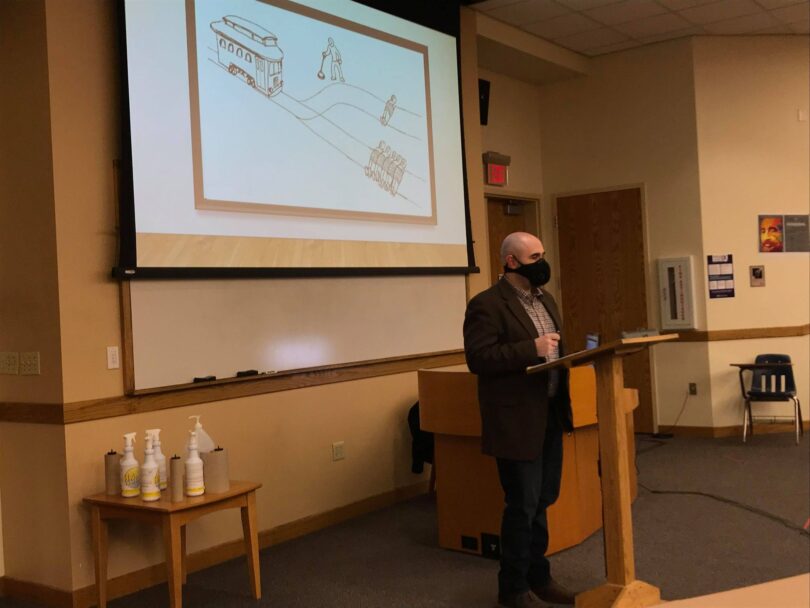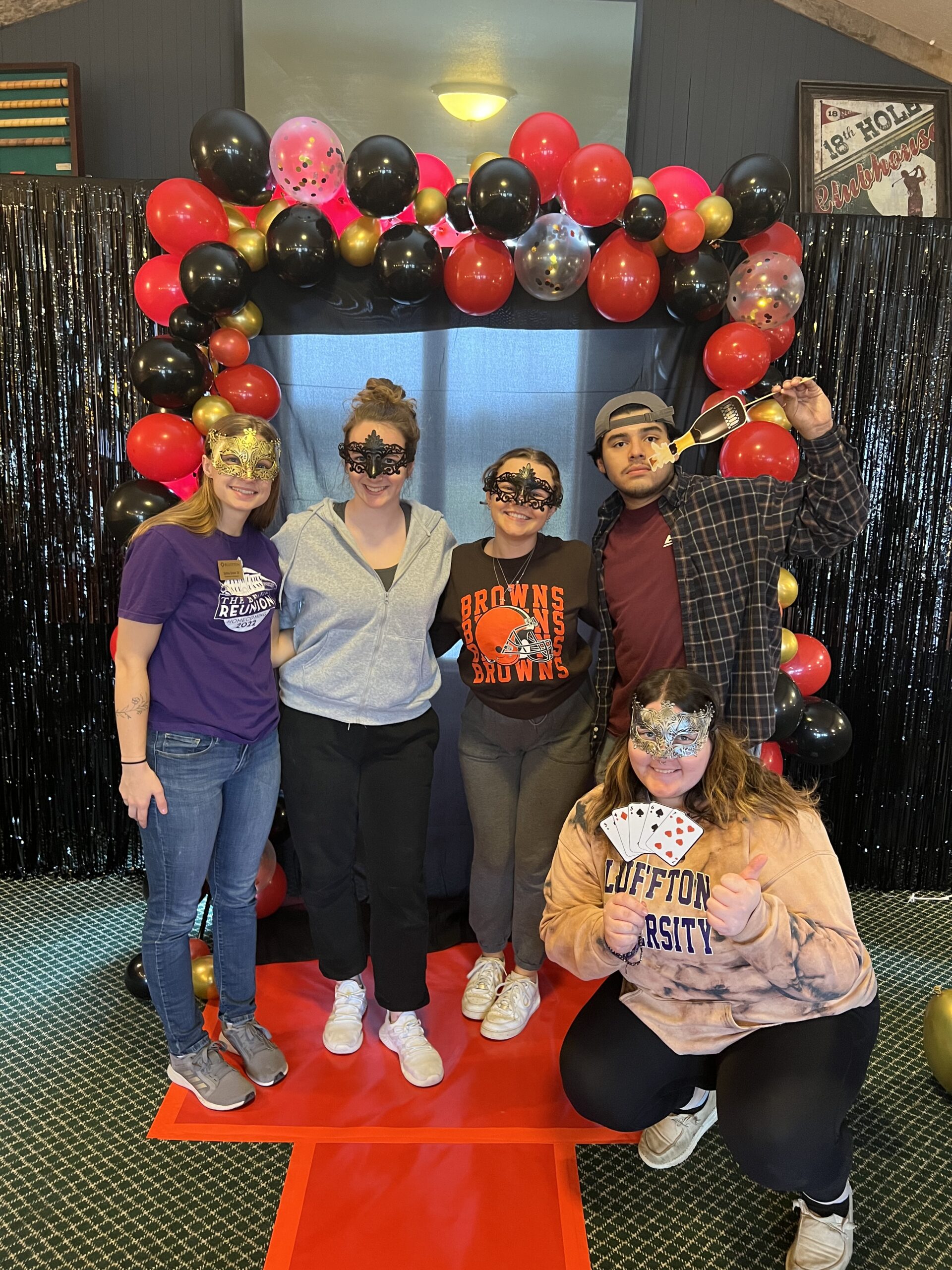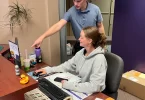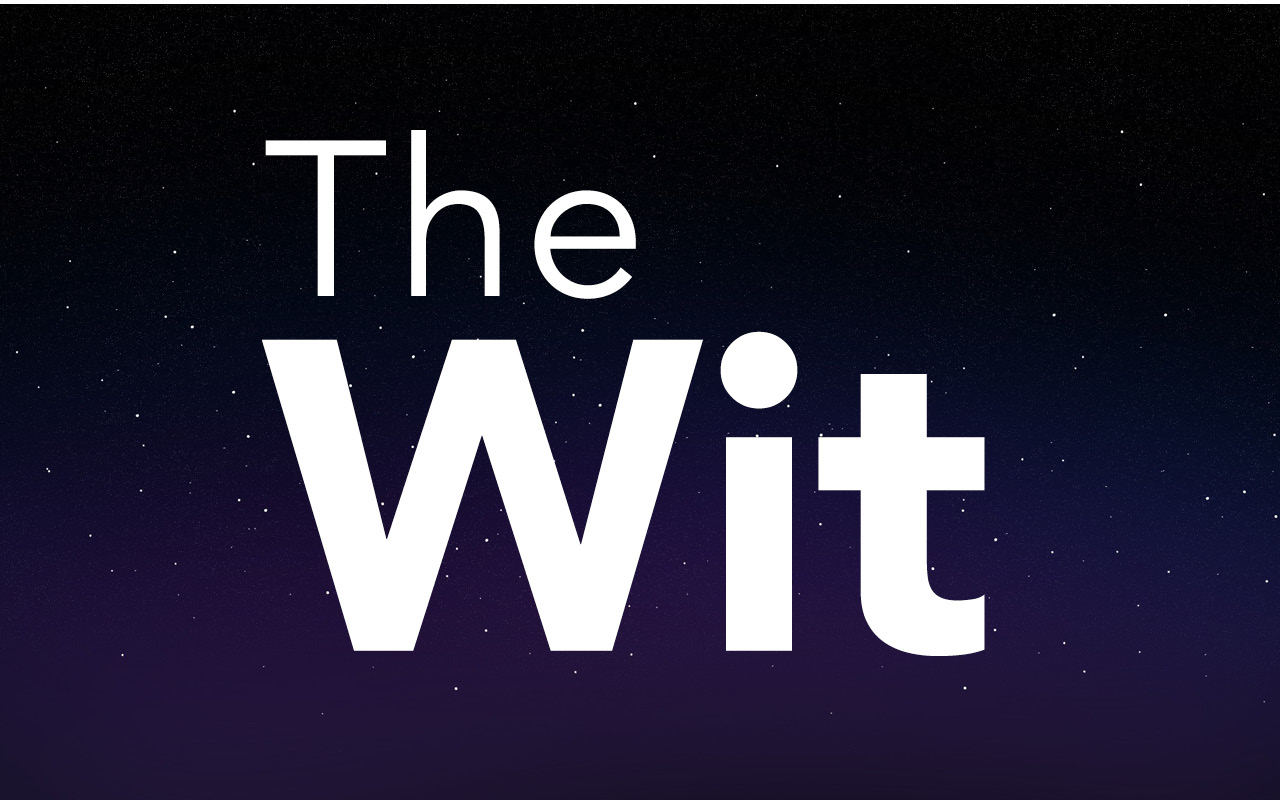Art, Communication and Theatre Department Chair and Professor of Communication Zachary Walton presented a colloquium March 12 on his research and findings from looking at Trolley Problem memes. His presentation was titled, “Meming Morality: Understanding the Rhetoric of Trolley Problems.”
During the fall 2019 semester, Walton took a sabbatical in which he pursued his interest in memes as a type of human expression. He was drawn to Trolley Problem memes specifically as they appear to be widespread in the culture and are democratic, allowing everyone to engage in the ethical reasoning at hand.
The Trolley Problem shows a train going on a track that diverges into two. On one rail, there is one person tied down, while on the other there are five people tied down. The train will continue towards the track that has five people on it unless the lever is pulled, diverging it to the track with only one person; you are in control of the lever — what do you do?
There is another version of this Trolley Problem where you are standing on a bridge with a heavier-set person. The train goes underneath of the bridge and is heading towards five people tied on the track. You have the option to not do anything and watch the five people die, or you can push the heavier set person and stop the train which only ends in the fatality of the larger individual — what do you do?
As a result of these questions and formats, there have been more variations made with different choices and different possible outcomes for the viewer to decide and think about. These resulted in the memes of which were the basis of Walton’s research.
“I was interested in the changes people would make because all thought experiments have particular elements, where if you change them, it changes your reasoning,” said Walton. “I was interested to see how people use humor, pop culture and political leanings to ethically reason.”
Walton used the images posted by the Facebook group “Trolley Problem memes,” and further organized and analyzed approximately 833 memes. He sorted these based on found patterns and methods he was influenced by. Along with the visual aspect, Walton also did research into looking at how others did their rhetorical analysis of memes.
From doing this research, Walton said he wonders about the different details people put into these memes to help create different experiments. What are the values and prejudices one is expected to decide between? What would it mean to have people making similar evaluations of these questions?
Walton explained how the Trolley Problem meme was meant to show human agency, in which one is making a definitive choice. Doing his research, he found a lot of the memes he was analyzing ended up expressing feelings of skepticism and hopelessness relating to the systems people are a part of. There were similar themes which came through such as things in general being broken, rigged and just not mattering which made Walton think of the Jan. 6 insurrection of the capitol.
“I wanted to see if this particular form of expression encouraged certain ways of looking at the world,” said Walton. “The memes didn’t cause [the capitol insurrection], but suggested a widespread mentality of the sense of the world among particular populations.”
Walton is able to come away from his research with a better understanding and tools of how to bring these forms of analyses and integrate them into his teachings. He wanted to be able to speak a more popularized language. This was a communicative product he didn’t know anything about and was able to further analyze it along with his journey on this scholarly pursuit.
When telling people what he was studying on his sabbatical, Walton received more curiosity and interest rather than criticism. He was able to show his findings and reflect on the response the audience gave him.
“I was very pleased about the reactions I received,” said Walton. “I received some great questions and observations and things I hadn’t thought about before. It was just a lot of great conversation. It gave me things to think about and people seemed to be engaged, which is exactly what I wanted.”







